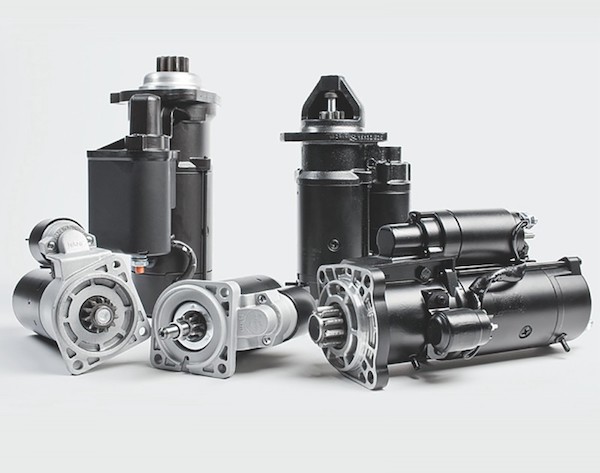What is a starter motor?
The starter motor is used to start, stop, reverse, or protect the electric motors. It is an integral component of an automobile engine, where it provides an initial kick because the engine cannot rotate on its own.
It comes in a number of designs and varieties. The article focuses on some of the common types of starter motors.

There are two primary types of electrical starter motors which are:
- Manual Starters
- Magnetic Motor Starters
1. Manual Starters
Manual Starters are the simplest starters that are so easy to operate. As the name indicates, they are operated manually.
Normally, they contain a button or rotary knob which allows the user to turn on or off the connected equipment.
Manual Starters offer overload protection, but they don’t have low-voltage protection. However, some key characteristics of manual starters are:
- Cost-effective.
- Provide safe operation and protect the motor from potential damage.
- Be useful in many applications due to their compact size.
2. Magnetic Motor Starters
Magnetic Motor Starters are operated electromagnetically. Here, the motor load is operated at a lower and safer voltage than the motor voltage.
These devices also have a contactor and overload relay. They protect the devices from overheating.
Unlike manual starters, they automatically cut the circuit during power failure as well.
The magnetic motor starter has two circuits, which are:
Power Circuit
The power circuit is responsible for supplying power to the motor. It has electrical contacts which transmit the electricity through an overload relay to the motor.
Control Circuit
The control circuit regulates the flow of current to the motor. The contacts in this circuit are opened or closed to allow or interrupt the flow of current respectively.
Moreover, the control circuit creates an electromagnetic field. This field pushes or pulls the contacts. It provides remote control of the starter.
Here are some types of Magnetic Motor Starters:
Direct Online Starter (DOL)
Direct Online starter is the most common type of starter motor. It connects the motor directly to the power supply.
DOL is controlled by a simple push-button, limit switch, float switch, etc. Due to its excellent features, the DOL starter is used extensively.
It provides overload and short circuit protection for the motor and allows to switch the current quickly.
Direct Online starter is a cost-effective alternative to star-delta and soft starter.
Plus, it is suitable for up to 5 HP motors. It has the shortest starting time and gives high starting torque due to high inrush current. But this high torque can wear down gearboxes, couplings, etc.
Also, the high inrush current can cause excessive voltage drop in the power supply. This drop affects other connected equipment.
Stator Resistance Starter
In the Stator resistance starter, the RVS (reduced voltage starter) technique is used to start the motor. It has three resistors. They are connected in series with each phase of a 3-phase induction motor’s stator.
These resistors are initially set at the “Start” or “Maximum” position so that they provide maximum resistance. A voltage drop happens at each resistor. This drop reduces the voltage across the motor. Plus, this voltage reduction also results in weak starting torque.
In the Stator resistance starter, the starting current is kept at a minimum. Such types of starter motors are an excellent option in the speed control application. They offer smooth acceleration. You can use them with both delta or star-connected motors.
Rotor Resistance Starter
It is also known as a Slip-ring starter motor because it operates on a slip-ring induction motor.
In this, three resistors are connected with the rotor in the star connection. These resistors are only used at the starting stage; they restrict the rotor current and enhance the torque. This way it reduces the starting stator current and intensifies the power factor.
Rotor Resistance Starter offers a wide range of speed control, and due to high starting torque, the motor can work under load.
Star Delta Starter
Compared to the others, Star Delta Starter has extensive applications in many industries.
Plus, their construction is simpler than other starter motors. There are three windings connected in a star connection in the star-delta starters.
After a certain time, set by a timer or any other controller, these windings connect in a delta connection. In star connection, the voltage drops by 58%. The total current drawn is 58% of normal, reducing torque.
Overall, star-delta starters have low surge currents. They are perfect for long acceleration times.
Autotransformer Starter
An Autotransformer starter reduces the applied voltage to a motor throughout its beginning. Such starters use an autotransformer having a single winding, which is used for input & output.
It also contains several tappings for output, which can be arranged in between 50% to 80% voltage.
Moreover, this starter can also work for star and delta-connected induction motors. Autotransformer starter is good for large motors; it is also suitable for long starting periods.
However, this method is pretty complex and requires an autotransformer, which is expensive.
